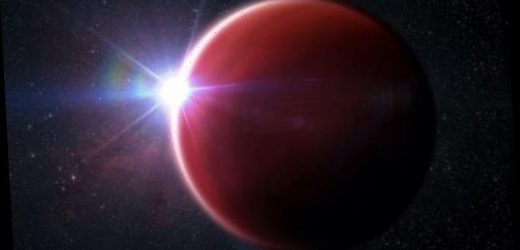NASA visualisation shows ‘shallow lightning’ on Jupiter
In our solar system, Jupiter has an average temperature of -234C. The gas giant is a freezing body with a thick, atmosphere and storm winds raging at up to 425 miles per hour. Jupiter has a radius of more than 43,000 miles and has a volume roughly 1,321 times that of Earth’s.
Astronomers have now discovered information about a similar planet more than 500 light-years from Earth, but it has been dubbed a “hot Jupiter”.
The planet is known as WASP-62b, and was first detected in 2012, using the Wide Angle Search for Planets (WASP) South survey.
However, astronomers had not studied its atmosphere until now.
The planet is very close to its host star, taking just four and a half days to complete an orbit.
We will use your email address only for sending you newsletters. Please see our Privacy Notice for details of your data protection rights.
Jupiter, for reference, takes 12 years to orbit the Sun.
As the planet is so close to the star, it is extremely hot, with its atmosphere being stripped under the intense glare of its star.
As there are no clouds, scientists are able to get a unique view of the planet.
Researchers from the Harvard and Smithsonian Center for Astrophysics stated there was no evidence of potassium, but sodium was present in abundance.
Usually, astronomers can only create an estimated guess of a planet’s composition, but without clouds, researchers can analyse it fully.
Munazza Alam, a graduate student at the Center for Astrophysics who led the study, said: “This is smoking gun evidence that we are seeing a clear atmosphere.”
Cloud-free planets are strikingly rare, with less than seven percent of exoplanets having clear atmospheres.
Ms Alam said the rarity “suggests something else is going on or they formed in a different way than most planets.”
DON’T MISS
Solar flares study: Activity ’might not preclude existence of life
NASA astronomers ‘nail down’ planet in incredibly rare triple system
NASA reveals importance of brown dwarf discovery to exoplanet hunt
She continued: “I’ll admit that at first I wasn’t too excited about this planet.
“But once I started to take a look at the data, I got excited.”
Researchers will use the James Webb Space Telescope, scheduled to launch later this year, to get a clearer picture of the planet.
A statement from Harvard and Smithsonian said: “The telescope’s improved technologies, like higher resolution and better precision, should help them probe the atmosphere even closer to search for the presence of more elements, such as silicon.”
Source: Read Full Article






